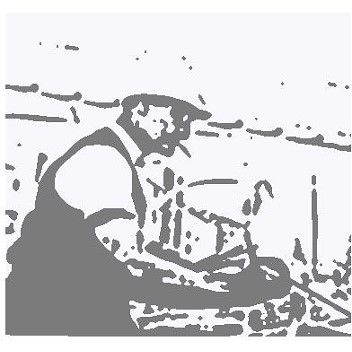Known for his contributions to the Fauvist movement, Charles Camoin was a founding member having exhibited alongside Matisse, Derain, and Marquet in the now famous Salon d'Automne, from which the movement earned its name. Even at the Salon, Camoin's style was distinguished from the other exhibiting artists for his more subtle palette and delicate brushstrokes. His preoccupation with the effect of light on colour and his exaggeration of atmosphere, particularly in his later works, can be likened to Impressionist aesthetics, particularly Renoir, whose workshop Camion visited after World War I.
Born the son of a paint manufacturer in Marseille, France in 1879, Camion later attended the École des Beaux-Arts in Paris at his mother's encouragement after winning a prize for drawing. There Camion studied briefly under Gustave Moreau before his death in May 1898. Though his studies were cut short due to his teacher's death, Camion made several long-lasting and influential friendships among his fellow students, including Matisse and Marquet.
Camion was best known for his still lives, landscapes, and portraits, whose simplified compositions and intense colouration gained him immediate popularity. He continued to perfect his style during his travels to Arles and Aix-en-Provence where he was stationed during his military service and met Cézanne with whom he corresponded for the rest of his life.
At the age of twenty-five, Camion had his first solo exhibition at the Galerie Berthe Weil in Paris in 1903. Later that same year, he contributed works to the Salon des Independents. In 1904, he exhibited at the Salon d'Automne where a passionate review by critic Louis Vauxcelles earned him and his fellow exhibitors the name Fauvists for their strong colours and fierce brushwork.
Following these successes, Camion entered a period of depression which had a profound effect on his artistic output, resulting in a shift from saturated, bold colours of Fauvism to an interest in the effects of light on colour, akin to the Impressionists. At this point, he took up plein air painting and travelled through the South of France with Matisse. Furthermore, during this "black period", Camion destroyed more than eighty of his paintings.
In 1913, he accompanied Matisse and Marquet to Tangiers, Morocco where he regained an interest in painting and continued to study the effects of light. Some of the works produced as a result of this trip were then exhibited in New York City at the Armory Show.
Camion was highly celebrated and there were several major exhibitions of his work during his lifetime including at the Museum of Rouen (1931) and the Museum of Modern Art in Paris (1952) as well as internationally. Before his death in 1965, he was presented with several honours, including the status of an Officer of the Legion d'Honneur in 1955. That same year, he was awarded the Prix du President de la Republique at the Biennale of Menton and, in 1959, he became Commander of the Order of Arts and Letters.
His works are included in the collections of the Centre Georges Pompidou; Museum of Modern Art, New York; and Musee d'Art Moderne de la Ville de Paris, amongst others.

